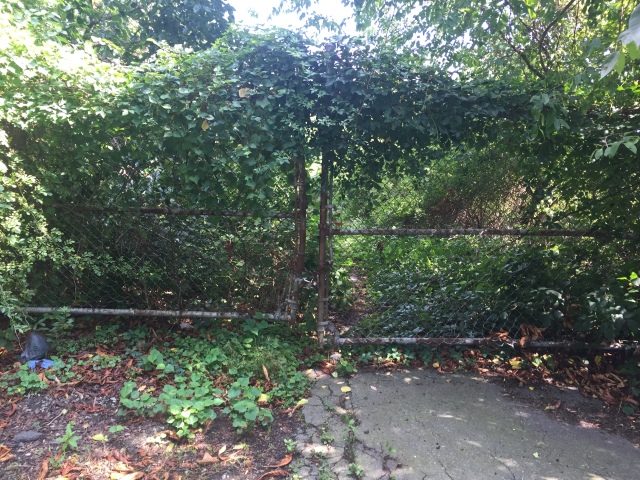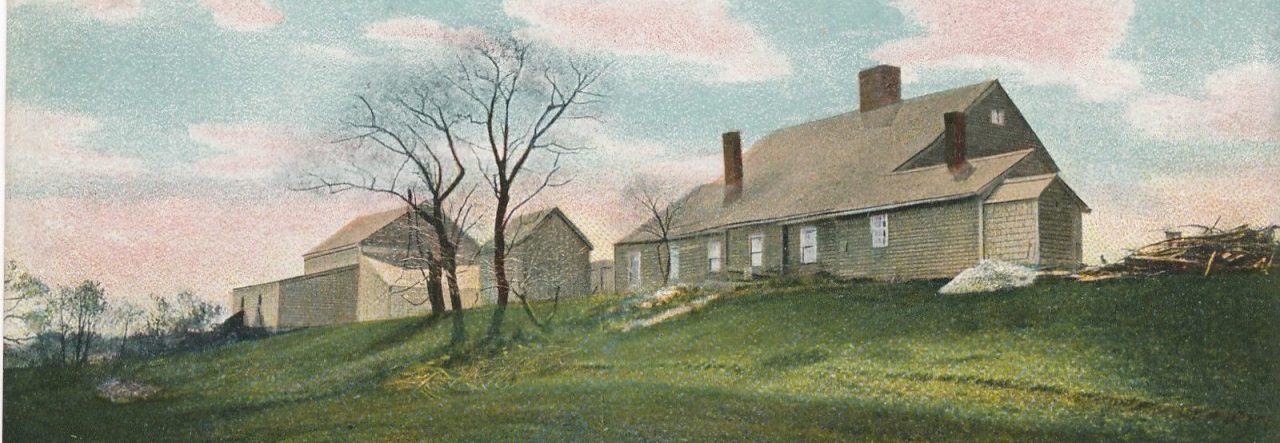(In the Herald-Citizen, 9/4/2020)

Just north of the Putnamville Reservoir in Danvers was one of the frontlines of the Cold War. Pointing skyward in their launchers atop a fortified concrete bunker, white-and-gray nuclear-tipped missiles stood ready to defend the United States from Soviet attack.
Army bases with Nike missiles, such as the one in Danvers, were built surrounding major American cities, with 12 such bases around Boston. The three sites on the North Shore – at the Beverly side of Beverly Airport, Nahant, and Danvers – came online by 1955. In the era before intercontinental ballistic missiles, the biggest nuclear threat facing the United States was the possibility of Soviet bombers dropping atomic bombs on American cities, especially along the coast. Originally carrying only conventional warheads, the missiles in Danvers had a range of just 25 miles and were designed to be launched into the Massachusetts skies to destroy enemy planes if Soviet bombers were attacking Boston.
Each missile battery was split into two halves, a radar/control site and the launch site. In Danvers, the radar/control site was on a hill off North Street, which today is the Lt. John A. Fera United States Army Reserve Center. Fera, a Danvers resident, was killed in action in Vietnam in 1968. This site hosted several radar emplacements that would track the enemy planes and guide a missile towards them.
Today, many of the original buildings at the radar/command site remain, but are used for other purposes, and although the radar towers were removed, the large concrete pads that they were situated on remain visible. When originally built, this radar post was isolated, surrounded by fields and forest, though today the nearby neighborhood comes right up to the fence surrounding the site.


The second half of the base, the missile launch site, was across the Putnamville Reservoir, along the Danvers/Topsfield line off Route 1. This installation, which could be seen from the radar site across the water, was a long rectangular area split into thirds. The first part was a circle of identical ranch-style houses right off Route 1 built for the base’s officers. Beyond that is a gate and guard tower that led into the section of the base with the barracks and armory. The final section was the launch area at the farthest end of the base, in the woods north of the reservoir.


The launch area had small outbuildings in which missiles would be assembled. These buildings were surrounded by tall dirt berms that could contain a blast should there be any accidental rocket fuel explosions. Beyond these structures, on a slight rise a distance away, was a large rectangular concrete pad that had a long metal track that the missiles would slide across to reach their launchers, and three large steel doors that were flat with the ground. These doors covered elevators that brought the missiles up from the underground concrete bunker so that they could be launched.


Although the Danvers base was known to exist, and its rough mission was known, in later years the original Nike Ajax missiles with conventional warheads were secretly switched out for nuclear-tipped Nike Hercules missiles – a fact unknown to most locals until years later. Although the payload changed to an atomic device roughly equivalent to what was dropped on Nagasaki and the range was increased to 75 miles, the mission did not change. The reason for the upgrade was that the original Nike Ajax missile could only take down one enemy aircraft per launch, and the radar could only guide one missile in flight at a time. What if the Soviets sent a whole formation of bombers? It was possible that not enough missiles could be launched in time to take down the planes one by one.
The US Government, therefore, decided that the best way to counter Soviet bombers was to add the nuclear element. If there was a fleet of enemy bombers approaching Boston, a Nike Hercules missile would be launched into the skies, the missile would collide with an enemy plane, and then the missile’s nuclear warhead would detonate in the skies over Massachusetts – or over the Atlantic along the Massachusetts coast. Sure, this weapon could bring down an entire formation of enemy planes, but even in the best-case scenario, there would be a Nagasaki-sized atomic blast detonated in the skies over Massachusetts, which seems…. less than ideal.
The Nike launch site in Danvers was decommissioned in 1974, once intercontinental ballistic missiles replaced bombers as the main Soviet threat to the US. The radar/control site on North Street remains an army post that has had varying uses in the years since. Nike missiles remained in use in Western Europe until the 1980s, when they were replaced with Patriot missiles that are still in service around the world.
Today, the former officers’ housing along Route 1 at the entrance of the launch site is now aptly named “Nike Village” and serves as community housing. Beyond that is a rusting chain-link gate with a decomposing wooden sentry post that guards the entrance to an abandoned and overgrown clump of deteriorated buildings. The underground missile storage bunker was sealed when the base was abandoned, no longer needed to defend the skies over Massachusetts.



————————————————————————————–
ColdWar-MA. “B-05 Danvers.” Accessed August 26, 2020. http://coldwar-ma.com/B-05_Danvers.html.
Cummings, Nathan A. “Flying Treadmills, Cold War Whales: A Trip to Concord Field Station,” March 10, 2016. https://www.thecrimson.com/article/2016/3/10/concord-field-station/.
Nike Hercules Story, 1960. http://archive.org/details/nikeherc01.
Western Electric. U.S. Army Nike: In Defense of the Nation. Accessed August 26, 2020. http://www.usshelena.org/1nike.html.
Zollo, Richard P. From Muskets to Missiles: Danvers in Five Wars. Danvers, Mass.: R.P. Zollo, 2001.

Terrific blog/site, Dan.
From your research, did you ever learn whose farm off North Street became the radar/control site?
LikeLike
Thanks! No, I don’t think I came across that
LikeLike
Was stationed at Danvers 1969 to 1971. Ran the Hipar radar.
.
LikeLike
Very cool. If you ever had any recollections you wanted to share, please let me know. The town archives collects historical information, including about the base, and they’d be happy to get firsthand accounts from those stationed there.
LikeLike
I was a dog handler there in 72-73.
LikeLiked by 1 person
Hi Don, I was stationed on the Radar Site in 1973 and 1974. Can I assume that you were stationed at the Launcher Site? My good friend Roger Chouinard who I enlisted with was also stationed on the Launcher Site.
LikeLike
Pingback: Dinner Tonight w/Recibe as Well As a FUNNY Memory From back in The Day – Big Country Expat